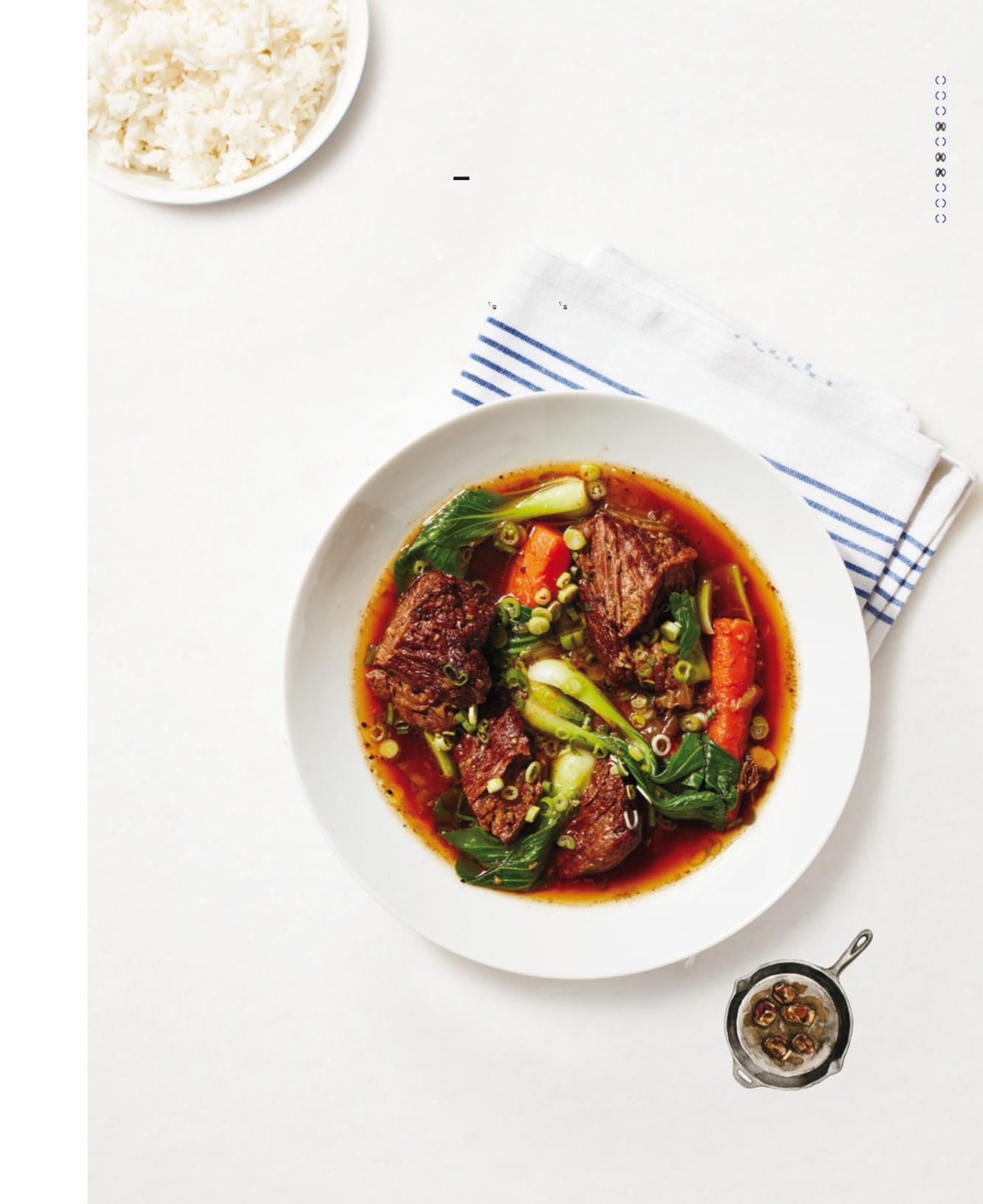
9 minute read
MEET YOUR NEW FLAME
aspects oflife flit andflurryaroundme—overthecourse ofmy readingI’ve changed jobs, moved apartments, andhadtwochildren—good old Dorothy isalways midsentence,midrevelation,waiting formetoreturn.
Ofcourse, I’mnotthe firstto discover the pleasuresofextendedprojects, andmineiscertainlyamongthe moremundane.DianaNyadswam53 hoursfrom CubatoFlorida in 2013, after fivepriorattempts. Director Richard Linklaterfilmedhis2014 movie Boyhood overthecourse of 12years.And Beat-generationpainterJay DeFeo continuously appliedoils to aworkcalled TheRose foreightyears,beginningin1958,untilthe pictureweighed nearly a tonand hadtoberemoved fromher apartmentbyforklift.It allleavesmeto wonder,whyonearthdowehumans embarkoncrazy extended endeavors?
Advertisement
Alex Lickerman,aphysician andtheauthor of TheUndefeatedMind, has thoughtalot about this.Hesayscommitting to lengthyventures allows us totest“whatinpsychologyis nowcalled grit,”that buzzwordymix of patience andperseverance.Lickerman remindedmeofthe famousstudyabout delayed gratificationconducted by thepsychologistWalterMischel and explainedinthe book TheMarshmallowTest:MasteringSelf-Control. Inthis study,childrenwereofferedachoice betweenone rewardimmediately (usuallyamarshmallowora cookie)and tworewardsiftheywaited. Mischel concludedthattheabilitytodelaygratification forthesakeoffuture reward hasprofound long-term consequencesfor people’swelfareandhealth.
Butscienceilluminatesthelong haul onlyelliptically.WhatIwant to know is,whydosomeof us notjust tolerate delayedgratification but seek it out? And howdowekeepthe faithalong theway?Tofind out, I tracked down three intriguingspecimens andaskedabouttheir long-hauladventures.
THE HIKER
MACONYORK was 15 when she set her sights on the Appalachian Trail. Her dream was to walk the length of it—from Georgia to Maine—backpacking and camping along the way, before she turned 30 (an age that to a teenager seemed impossibly distant). After college, the Georgia native moved to New York to work as a designer, and one day, in the magazine office where she worked, she happened upon a memoir of hiking the trail. “It felt like a sign,” says York.
She spent the next year planning her trip, taking on an additional roommate and freelance work, and squirreling away a tax refund to amass the $6,500 she needed for gear and expenses. In March 2012, at age 27, she set out with a friend. The second day, the friend had to back out due to an injury.
“I was totally alone,” York recalls. She did encounter other hikers (a whole culture exists around hiking the trail), “but they were so cranky and grumbly. I was just happy to finally be doing it.” About 100 miles in, she met—and joined—a group of like-minded souls. “Having friends laughing through the hard days made it so much easier. It felt less like a feat of endurance and more like an adventure.”
How does one conquer a 2,160mile trail, even with a supportive posse? “Starting out, you do 10 or 12 miles a day until you get your ‘trail legs,’ ” York explains. “After about two weeks, I was doing 15 to 19. Your body acclimates a bit at that point. You get quick with your chores—getting water, packing up the tent—and you’re more in shape.”
York reveled in the beauty of the trail and the wonders of waking up in the woods. Walking through the change of seasons was thrilling: from the brown, barren tones of March, through the blossoms of springtime, the lush greens of summer, to hints of autumn gold.
Of course, it wasn’t all magic. “In Vermont and southwestern New Hampshire, the newness was over, I was sore and tired, and there weren’t many spectacular views.” Later, Maine’s White Mountains proved incredibly demanding. “Five to 10 miles was all we could do. It was kind of demoralizing to hike all day and cover so little ground, but the trail was hard and the days shorter.”
At the end, York found herself full of triumph, and as a bonus, in love with one of her hiking buddies, Luke Costlow, who is now her fiancé.
York says she wasn’t thinking about the epic quality of the undertaking as it was happening. “It was more, Tomorrow I am going to get up and hike 17 miles. There was a basic understanding that I’ll eventually get there if I do the work.” And physically? “I was impressed by my body,” says York, now 31. “I feel like our bodies are stronger than we give them credit for.”
THE DRAFTSMAN
JAMESGULLIVERHANCOCK likens his plan to draw every building in the Big Apple to the proclamations of enthusiastic children. (I’m going to fly to the moon! I’m going to be king of the world!) “I love it when kids make huge, sweeping statements,” he says. Of his own grand plan, the freelance illustrator says,
THE DRAFTSMAN
NAME: James
Gulliver Hancock
PROJECT: Drawing
every building in New YorkCity
TIME FRAME: Begun
in2010; 1,000down, a zillion to go

THE QUILTER
NAME: Sister Judith
Ann Shea
PROJECT: Intricately
embroidering and quilting a queensize bedcover
TIME FRAME: 47 years,
on and off, from 1966to 2013

“I’m committed to it as a goal, no matter how unachievable.”
Hancock, age 38, who is from Australia, started the project when he moved to New York, five years ago. He says he wanted to keep a diary of how the city looked to him as an outsider. “I couldn’t get over [the buildings’] familiarity from film and TV,” he explains. “I was intrigued to see it operating for real.”
He never leaves home without his sketch pad. When a building catches his eye, Hancock might do a quick sketch in a minute or two, or he might settle in and spend 20 minutes. “Your observation goes to another level when you sit and draw real things out in the world,” he says. Over the years he has been at this, his drawings have evolved, taking on more detail and, in some cases, color. (Full-color pen-and-ink pieces can take an entire day.)
At press time, Hancock has drawn more than 1,000 buildings. What drives him? He says that when he sees the city from a distance—from a bridge, for example— he’s moved by its vastness, and sad about the impossibility of spending time with every building. “I think this manifests as anxiety, and that might be what keeps me going,” he says. “I want to gather and gather and gather till I get all ofthem in my collection.”

THE QUILTER
WHENSISTERJUDITHANNSHEA of the Sisters of Saint Joseph, in Brentwood, New York, was a novitiate, back in 1966, a sister at her convent was given an expensive quilting kit as a gift. After cross-stitching one elaborate 14-inch snowflake, the sister gave up in frustration. There was a whole queen-size expanse to cover. The kit ended up on a giveaway table, and Shea took it for her mother, who had just retired. One more cross-stitched snowflake later, the kit was back with Shea.
She began carrying panels of the quilt and cross-stitching whenever she had time to fill on an airplane, in a community meeting, or in medical waiting rooms, as she helped her sister through a lengthy illness. Eventually Shea set a goal: to have the quilt ready for her nephew’s 25th wedding anniversary, in 2000. That date came and went.
More than a decade later, in 2012, that same nephew announced the wedding of his daughter Kris. Suddenly Shea had a feeling that the quilt had really been for Kris all along. She happened to have been born in a blizzard and would appreciate all those delicate snowflakes. So Shea buckled down, spending every spare minute measuring and cutting batting and hand quilting each panel. “I don’t think I came up for air once that year,” she says. “My fingers had calluses. But I had that goal to have it for Kris’s wedding, and that was very important to me.”
When the quilt was finished, in time for the August 2013 nuptials, Shea looked at it and could not believe that she had finally done it. She proudly presented it to the delighted bride and promptly immersed herself in other quilting projects.
Shea, now 76, knows what it is to put something aside, then have that unfinished endeavor call until you pick it back up. She was never troubled by the way the quilt morphed in scope and meaning. To her, that’s all part of the process. “In art, when you’re creating,” she says, “you have to be open to the possibilities.”
BEING, AND STAYING,OPEN TO THEPOSSIBILITIES. That,rightthere,isexactly thenear mysticalappealofthe long haul.Whatstruckmemostaboutthese disparatelong-haulerswas howsimilartheirattitudeswere.Theyremind me toenjoytheslownessofaworthy,complexendeavor,tosurroundmyself withpositive people,andtoremember tolaugh, eventhroughthe moments thataren’t fun,evenwhenyoulookinfront ofyouandseehundreds more miles towalk,eightmorefeet to cross-stitch,evenwhenlifetakesover and youneedtoput awayyour projectand comebackto itlater,sometimes much later.Theseare allpart of theprocess.And theyare all,infact,what makes thelonghaul soveryworthy.
I suspectanotherbenefitofthelong haulhassomethingto dowithwhat John Keatscalled“negativecapability,”thewillingness, evendesire, to embraceuncertaintyandlivewith mystery.Thereisso little of thisinour scheduled,circumscribeddaily lives.Practicallyevery singlequestion wehavecan beansweredbyGoogle,andIknow I’m nottheonly onewith aTicking-Things-Off-To-Do-Lists addiction. Butwecrave somethingmore. Wesuspectthatbypushingourselves,bydiggingdeep,wewillget alittle closertoknowingwhatwe aremadeof.
Whetherit’sasingular goaloraventurethat becomes a dailypractice,havinga projectcansustain usthroughthe rockytimes,can serveasa comfort, canoffersomethingto returnto.Thelong haulisinthatway akinto the essence oflife:addingone stitch,thenanother,then another,inorderthat thelargerpattern canmakeitselfbe,eventually,seen.

WHAT’S NOT TO LEEK?
This inexpensive, easy-tofind relative of the onion tastes great with chicken, especially when you cook it in the pan drippings (page 150).

NUTS FOR PASTA
ANCIENT GREEKS THOUGHT WALNUTS CURED HEADACHES. LIVENING UP AQUICK WEEKNIGHT PASTA IS ALMOST AS GOOD (PAGE 152).
Quick Cooking 136, 138, 152, 154, 159 Healthy Pick 136, 155, 159 Freezable 150, 159
Make Ahead 136, 149, 150, 152, 155, 159 Slow Cooker 149
One Pot 136, 149, 150, 155, 159 Whole-Grain 136, 138, 155 Vegetarian 136, 138, 159 Gluten-Free 136, 138, 150, 154, 159
ANOTHER ROUND
In a health face-off, corn tortillas beat flour for their lower fat and higher fiber stats. Try them with the skirt steak tacos (page 154).
Photographs by Kate Mathis Food Stylingby Chris Lanier

EASY DINNER 1 Slow-cooker Asian short rib stew
HANDS-ON TIME 30MINUTES TOTAL TIME 41⁄2 HOURS TO 71⁄2 HOURS SERVES 6
3pounds boneless beef short ribs, cut into 2-inch pieces ⅓cup finely chopped fresh ginger ¼cup soy sauce 6cloves garlic, finely chopped 2½tablespoonstoasted sesame oil
Kosher salt and black pepper 3carrots, cut into 3-inch pieces 3red onions, cut into wedges 1cuplow-sodium beef broth 1pound baby bok choy (3 medium heads), coarsely chopped 4scallions, sliced, plus more for serving 2½tablespoonswhite vinegar
Steamed rice or noodles, for serving
COMBINE the short ribs, ginger, soy sauce, garlic, sesame oil, and ¾ teaspoon each salt and pepper in a 6-quart slow cooker and mix well. Add the carrots, onions, and broth and stir to combine. Cover and cook until the beef is tender, on low for 6 to 7 hours or on high for 4 to 5 hours. SPOON off the fat from the slow cooker. Stir in the bok choy, scallions, and vinegar until the bok choy is wilted. Serve the stew in bowls topped with additional sliced scallions, along with the rice or noodles.
Recipes by
Justin Chapple
THINGS COOKS KNOW
Yes, you can throw everything in the slow cooker and walk away. But for even better flavor, first brown the short ribs in oil in a hot pan over medium-high heat, turning every 2 minutes until deeply golden brown. Quick Cooking Healthy Pick Freezable Make Ahead Big Batch Slow Cooker One Pot Whole-Grain Vegetarian Gluten-Free










